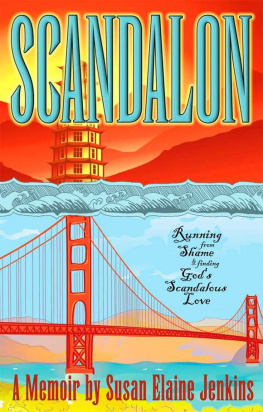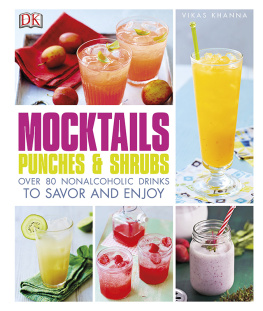
SHIRE PUBLICATIONS
Bloomsbury Publishing Plc
PO Box 883, Oxford, OX1 9PL, UK
1385 Broadway, 5th Floor, New York, NY 10018, USA
Email:
www.shirebooks.co.uk
This electronic edition published in 2019 by Bloomsbury Publishing Plc
SHIRE is a trademark of Osprey Publishing Ltd
First published in Great Britain in 2019
Moses Jenkins, 2019
Moses Jenkins has asserted his right under the Copyright, Designs and Patents Act, 1988, to be identified as Author of this work.
All rights reserved
You may not copy, distribute, transmit, reproduce or otherwise make available this publication (or any part of it) in any form, or by any means (including without limitation electronic, digital, optical, mechanical, photocopying, printing, recording or otherwise), without the prior written permission of the publisher. Any person who does any unauthorised act in relation to this publication may be liable to criminal prosecution and civil claims for damages.
A catalogue record for this book is available from the British Library.
ISBN: 978-1-7844-2343-8 (HB)
ISBN: 978-1-7844-2342-1 (eBook)
ISBN: 978-1-7844-2342-1 (ePDF)
ISBN: 978-1-7844-2344-5 (XML)
Shire Publications supports the Woodland Trust, the UKs leading woodland conservation charity.
To find out more about our authors and books visit www.ospreypublishing.com. Here you will find our full range of publications, as well as exclusive online content, details of forthcoming events and the option to sign up for our newsletters. You can also sign up for Osprey membership, which entitles you to a discount on purchases made through the Osprey site and access to our extensive online image archive.
)
CONTENTS
INTRODUCTION

Today cocktails use a wide range of innovative ingredients; in this case a cocktail has been made from gin and kombucha, a type of fermented tea drink, and garnished with cucumber and rose. (Getty Images)
Gin is, at its simplest, a neutral spirit imparted with flavour from a range of plantbased materials referred to as botanicals, one of which must be juniper. If this was all there was to it, then gin would be just another one of many alcoholic spirits. The story of gin is, however, far more intriguing: it has undergone many changes in status and fortune in over 300 years since it was first drunk in Britain. The twists and turns of this intriguing history, as much as the botanicals used in its production, give gin the depth of flavour that have made it in recent decades a vastly popular drink once again. This book provides a short history of gin production and consumption in Britain and beyond.
The origins of gin can be traced to the use of juniper as a medicinal plant in the ancient world and in the use of alcoholic tonics in later centuries; when these were combined the ancestors of gin were created. Consumption of juniperflavoured spirits for recreation was first seen in the Netherlands and Belgium where the spirit still known today as jenever is manufactured.
When gin consumption increased dramatically in Britain in the first half of the eighteenth century a moral panic was created. The spirit was blamed for all of societys ills and it took almost fifty years to curb consumption. So strong is its association with degenerate behaviour that gin has provided the English language with several phrases from that era, such as ginsoaked, gin joint and gin mill, none of which have particularly positive connotations.
However, new technology in the nineteenth century enabled gin producers to improve the quality of gin on an industrial scale, leading to the development of London Dry gin. American influences led to the use of gin in cocktails so that by the 1920s it had entered a golden age of consumption and popularity.
Tastes would change in the decades after the Second World War and gin was in the doldrums for some time. The last twenty years, however, have seen the spirit soar in popularity once again. Craft producers and large distillers alike are today making gins of a quality and diversity never seen before.
From medicinal tonic to imported luxury, corrupter of the young to the basis for stylish cocktails and today a crafted product of distinction, gin is the most intriguing, versatile and adaptable spirit that can be found.
AVIATION
INGREDIENTS
60ml gin
15ml maraschino liqueur
7.5ml crme de violette
25ml lemon juice
METHOD
Add ingredients to a shaker with ice. Shake then strain into a cocktail glass. Garnish with a brandied cherry.

An Aviation cocktail, ready to drink, the beautiful colour coming from crme de violette. The cocktail was made in America before prohibition and has recently seen a revival in popularity. ( Erich Wagner (www.eventografie.de)/CCBYSA4.0)
GIN PRODUCTION

A pot still used in the manufacturing of gin. Although this is an older type of still than the continuous still, it is widely used today, particularly in craft gin manufacturing. (Getty Images)
The manufacture of gin involves taking a base spirit and flavouring it with extracts from organic material known as botanicals. This chapter provides a summary of how this process is carried out, and explores some of the intriguing stories behind it.
DISTILLATION AND BASE SPIRITS
Gin starts life as a neutral alcoholic base spirit, formed by distilling a source of ethanol. In gin production this base spirit is normally formed from a fermented wash of grain. This wash is then heated in a still with vapour rising into a condenser. This process separates heavy alcohols, many of which are not wanted in modern spirit production (methanol, for example), from the alcohol that is required ethanol. This is then commonly boiled again in a redistillation process that separates the ethanol from water and gives a neutral spirit. To legally manufacture a distilled gin or London Dry gin within the EU the base spirit needs to have been distilled to over 96% ABV (alcohol by volume).

Gin production on an industrial scale. This is the Goswell Road Still Room, home of Gordons Gin in the 1950s. (Diageo)
The range of base spirits used in gin production today in many cases involve considerable innovation, although maize and barley remain the most common origin for base spirits. For example, Haymans of London use 100% English wheat to produce their base spirit. At St George Spirits in California, pot distilled rye is used as the base spirit. The Oxford Artisan Distillery uses ancient species of grain to produce base spirit working with an archeobotanist as part of the process. Some gin producers take what is sometimes referred to as the grain to glass or field to bottle approach, which sees them manufacture both base spirit and gin. The abovementioned Oxford Artisanal Distillery, Copper Rivet Distillery and Chase Gin are all examples of this. Many gin makers, however, buy distilled base spirit from a distiller and then use this as the basis for making their gin.



















